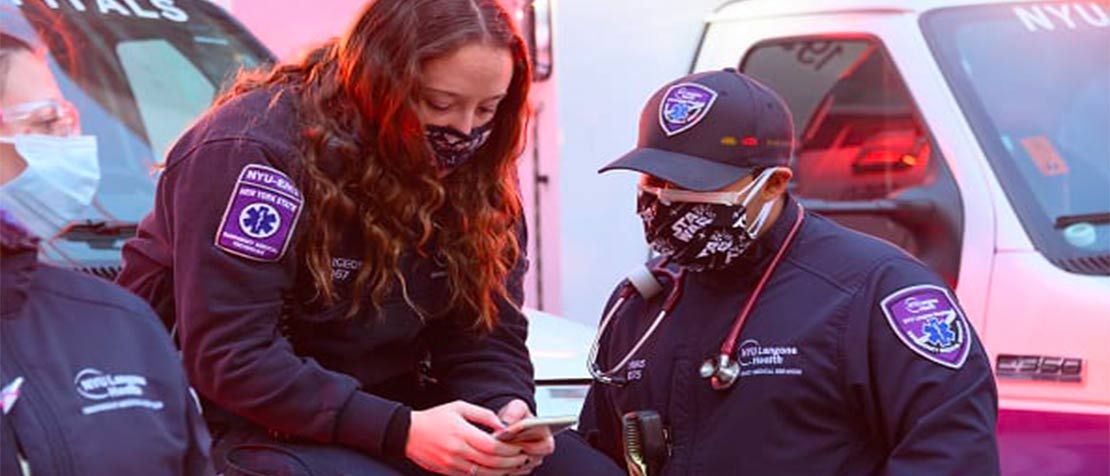
3 key areas innovative tech is helping during the COVID-19 pandemic
Information and communication technologies (ICTs) and other technologies are increasingly being used to support efforts to combat and contain the spread of the global COVID-19 pandemic.
Here are three key areas where innovative technology is helping during this unprecedented crisis:
1) Breathing equipment
Breathing apparatuses are vital to treat patients with advanced respiratory issues due to COVID-19. Early reports from Lombardy, Italy, suggest that 50 per cent of patients given oxygen through Continuous Positive Airway Pressure (CPAP) devices have avoided the need for invasive mechanical ventilation. But many countries around the world have been faced with a critical shortage of this much needed equipment.
The latest solution in the United Kingdom comes from an unlikely source: automotive sport. Mercedes Formula One worked with University College London engineers and clinicians at University College London Hospital to build a CPAP breathing apparatus that pushes oxygen to the lungs without needing a ventilator. This solution uses 70 per cent less oxygen than earlier models.
Machines that would normally produce pistons and turbochargers for Mercedes’ Formula One cars are now being used to produce these CPAP breathing aids, and the company’s entire facility in Brixworth, UK, has been repurposed to meet this demand. The design has been made open-source so that other companies can reproduce the equipment where needed.
2) Contact tracing
Tracking the spread of the virus has so far shown to be an effective way of containing the spread of the disease. Mobile phone contact tracing initiatives have been launched in various countries such as China and Ghana, and last week, rivals Apple and Google announced a joint project that will use a phone’s short-distance Bluetooth-based networking signals to track the spread of the disease.
Liechtenstein has begun a pilot programme to fit its citizens with biometric bracelets to track potential cases of COVID-19 in real time to create an ‘early warning system’. The bracelets for the project are being supplied by Ava, a Swiss medical technology company which currently sells the bracelets to help women monitor their fertility cycles.
The bracelets will collect data on metrics such as skin temperature, breathing rate and heart rate — data that will then be sent to a laboratory in Switzerland for analysis. It is hoped that this data will help health authorities develop algorithms that can detect the exact pattern of subtle changes in individuals’ physiology that can then identify likely cases of COVID-19 — even before symptoms are noticeable.
Also, the Pan-European Privacy-Preserving Proximity Tracing (PEPP-PT) initiative is seeking to create a GDPR-compliant app that helps COVID-19 contact tracing using Bluetooth technology, machine learning and AI.
3) Patient care
The number of COVID-19 cases worldwide has surpassed two million people. While not every person needs to be treated in hospital, the number of patients is putting extraordinary strain on medical staff around the world.
In China, remote-controlled robots have been deployed to help medical staff perform critical functions such as taking mouth swabs to test for the virus, performing ultrasound scans and listening to organs with a stethoscope. In Italy, the epicenter of Europe’s COVID-19 outbreak, robots have been used to deliver food and monitor routine health indicators.
Artificial Intelligence (AI) is also playing a role in patient care. One example is a device developed by researchers at MIT’s Computer Science and Artificial Intelligence Laboratory (CSAIL) which helps doctors to remotely monitor patients with chronic diseases, but has been repurposed to help tackle the COVID-19 pandemic.
The device – named Emerald – is installed in a patient’s room and monitors their health through wireless signals that bounce off their body before returning to the system. The system’s algorithms can analyze changes in the signals to track the person’s breathing rate, sleep patterns, and movements. This data is then sent to a doctor, who can review the changes from home.
Learn more about AI’s role in combating the spread of Covid-19 in ITU’s new AI for Good webinar series.
(Photo by Noam Galai/Getty Images)
